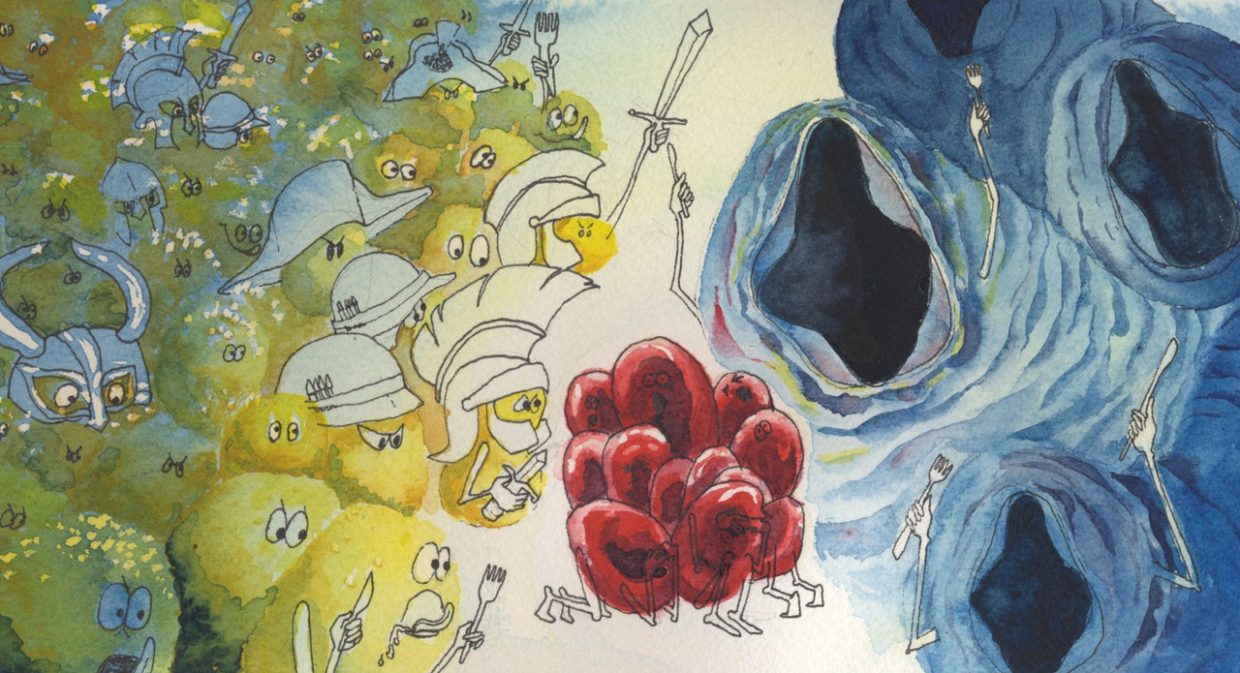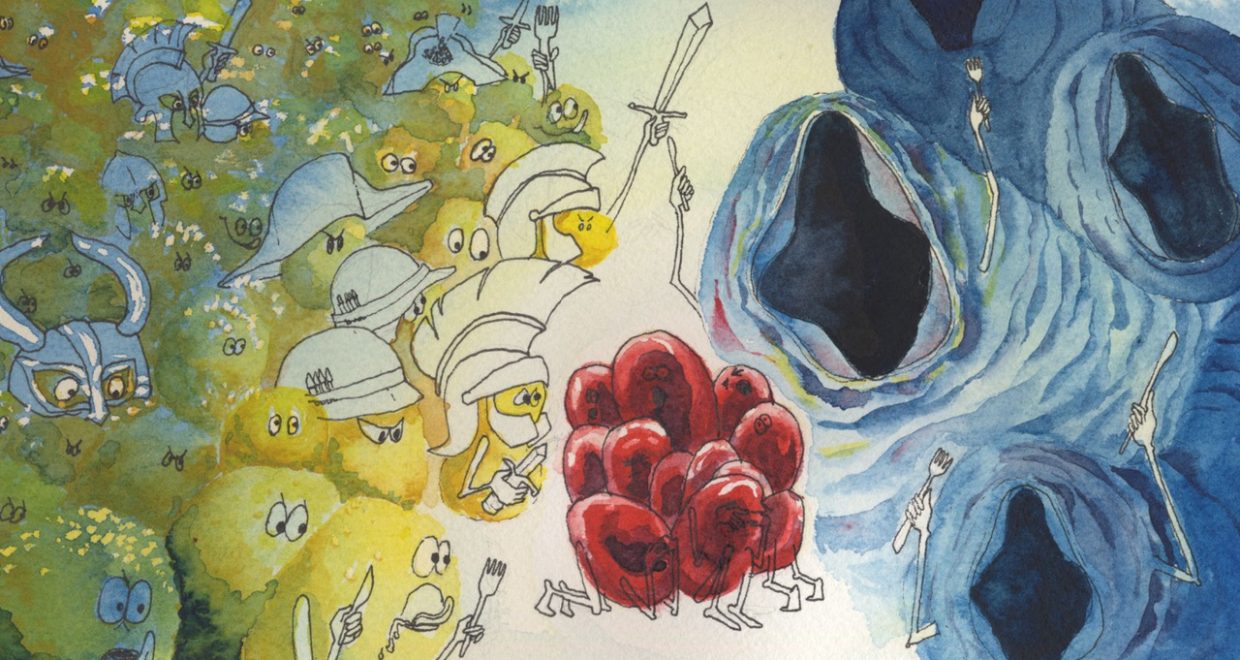Interactions between initial infectious dose and co-infecting worms in mice infected with malaria
The latest Paper of the Month for Parasitology is “Differential drivers of intraspecific and interspecific competition during malaria–helminth co-infection” and is freely available for one month.

Why do some individuals become sicker than others when they are infected with the same pathogen? Two factors that can change how sick an individual becomes are the dose of the pathogen and the presence of another parasite. We studied these two factors in mice that were infected with malaria and hookworms. Malaria parasites live inside red blood cells, while hookworms are a type of nematode that feed on red blood cells. The presence of hookworms can negatively impact malaria by decreasing the availability of red blood cells or by altering the host’s immune response to malaria. While we studied these parasites in mice, malaria and hookworms also infect humans, and it is quite common for a person to be infected with both at the same time.
We used mathematical models to track the movement of malaria parasites between the red blood cells of infected mice. After infecting a red blood cell, malaria parasites replicate and then burst out (killing the red blood cell as they do so), after which each new parasite can go on to infect a new red blood cell. By counting the number of infected and uninfected red blood cells at different times and then modelling this data, we could “watch” the parasites replicate and infect new waves of red blood cells. We monitored infections that were initiated with different numbers of parasites to see whether patterns changed when mice were infected with just a few malaria parasites versus when they were infected with a large dose of parasites. We also compared the patterns for mice that were simultaneously infected with hookworms, while others were only infected with malaria.
When the mice were infected with higher numbers of malaria parasites, it took less time for malaria to spread throughout their bodies. However, when mice were simultaneously infected with hookworms, the malaria infection was dampened, resulting in a slower and reduced spread of malaria parasites from red blood cell to red blood cell. Our mathematical models predict that this is due to a decrease in the availability of red blood cells.
Malaria is a serious parasitic disease in people: more than half the world’s population is infected with malaria at any given time, and it causes hundreds of thousands of deaths every year. Understanding how worms and malaria parasites interact within an infected individual could help predict the consequences of attempting to control one of these diseases on the severity and spread of the other.
If you would like to learn more about malaria please visit our collection of papers that was curated specially for World Malaria Day 2021, available here: World Malaria Day
The paper “Differential drivers of intraspecific and interspecific competition during malaria–helminth co-infection” by L. F. Wait, T. Kamiya, K. J. Fairlie-Clarke, C. J. E. Metcalf, A. L. Graham and N. Mideo, published in Parasitology, is available free for a month.






